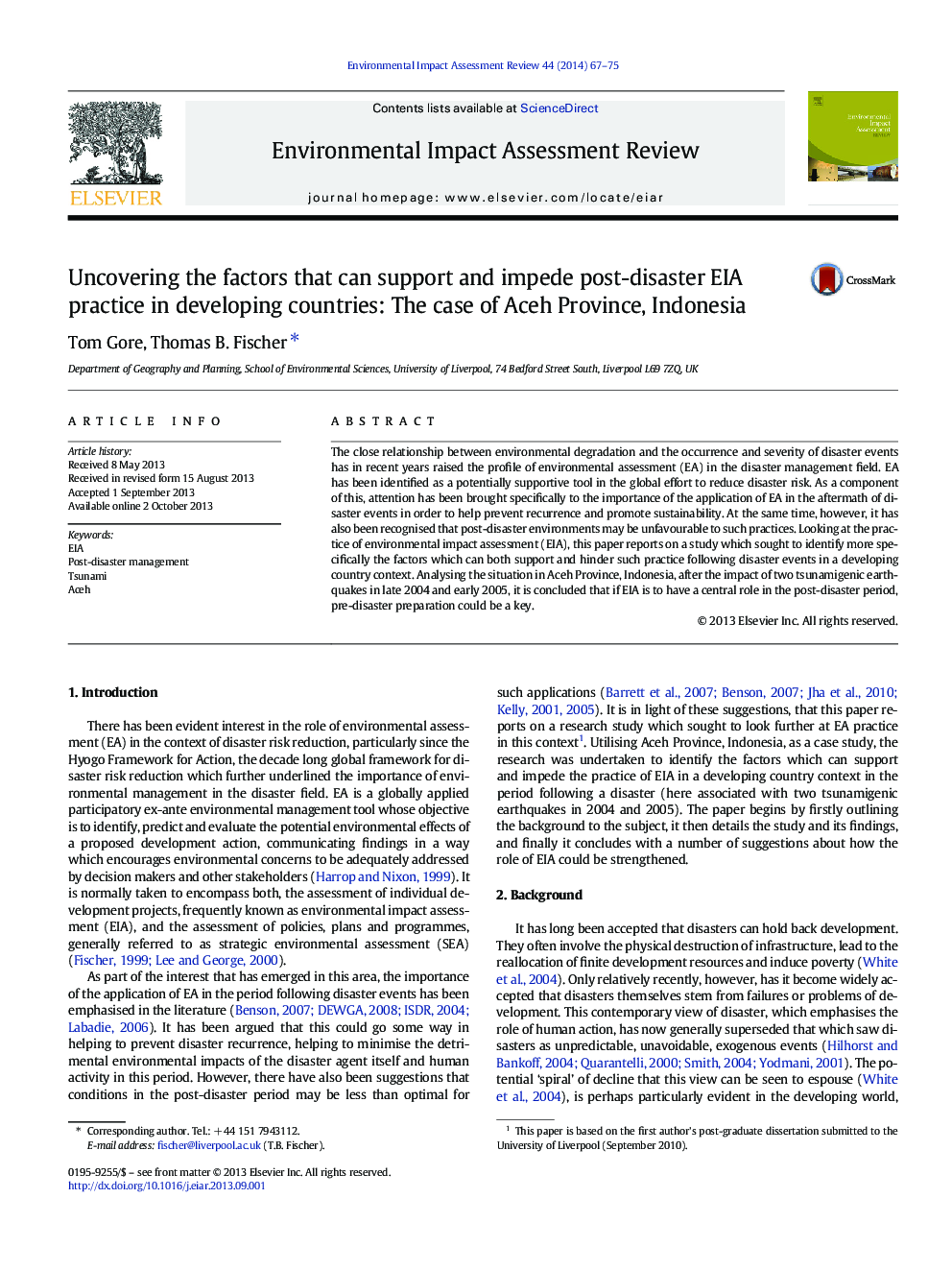| Article ID | Journal | Published Year | Pages | File Type |
|---|---|---|---|---|
| 1052779 | Environmental Impact Assessment Review | 2014 | 9 Pages |
•Close relationship between environmental degradation and occurrence/severity of disaster events has raised profile of EA.•EA as a potentially supportive tool in the global effort to reduce disaster risk•Application of EA in the aftermath of disaster events to help prevent recurrence and promote sustainability•The paper looks at factors which can both support and hinder EA following disaster events in a developing country context.•We analyse the situation in Aceh Province, Indonesia, after the impact of two tsunamigenic earthquakes in 2004 and 2005.
The close relationship between environmental degradation and the occurrence and severity of disaster events has in recent years raised the profile of environmental assessment (EA) in the disaster management field. EA has been identified as a potentially supportive tool in the global effort to reduce disaster risk. As a component of this, attention has been brought specifically to the importance of the application of EA in the aftermath of disaster events in order to help prevent recurrence and promote sustainability. At the same time, however, it has also been recognised that post-disaster environments may be unfavourable to such practices. Looking at the practice of environmental impact assessment (EIA), this paper reports on a study which sought to identify more specifically the factors which can both support and hinder such practice following disaster events in a developing country context. Analysing the situation in Aceh Province, Indonesia, after the impact of two tsunamigenic earthquakes in late 2004 and early 2005, it is concluded that if EIA is to have a central role in the post-disaster period, pre-disaster preparation could be a key.
